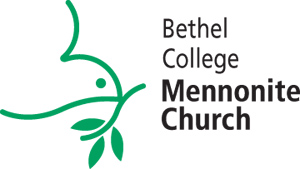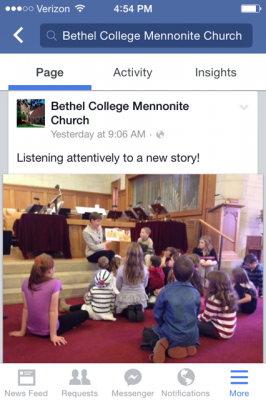I remember when I first encountered Facebook. I was a freshman at Eastern Mennonite University. I had just uttered goodbyes to all my friends from high school only to be reunited with them a few weeks later as my very first set of Facebook “friends.”
I did not imagine that creating my Facebook account would be something that I still live with a decade later.
No one imagined that Facebook would have 1.23 billion users worldwide a mere decade later either.[1]
But here we are: Facebook, Twitter, Instagram, Snapchat, and who-knows-what’s-next are with us to stay. Each of these social media platforms are a living entity, continually innovating themselves as they respond to the desires of users and a rapidly evolving online world culture. They offer unique services, but ultimately each is in service of connecting people. They provide a virtual space to share conversation, information, and images.
The rise of social media leads many to believe that increased communication and connection will result in a more empathetic and peaceful world. I am skeptical of this narrative, although Twitter has been immensely helpful in allowing youth to organize in protest of injustice in Cairo’s Tahrir Square, Wall Street, and Ferguson, for example.
Some rejoice that social media platforms and increasingly user-friendly devices offer us an unprecedented opportunity to enter into deeper relationships with more people across greater distances. Others find it hard enough to just keep up with the people we see on a daily basis.
Overall, it’s probably wise to resist “salvific” narratives that suggest social media platforms will dramatically improve the world. It’s also equally wise to recognize the powerful gifts and opportunities that social media offer us as a vibrant community of faith.
Perhaps, we might think of social media as tools.
Tools are handy. They make achieving difficult tasks easier. They help talented carpenters to construct beautiful buildings. And when we admire those buildings, we don’t stand around in awe of saws, hammers, and screws.
I think of Facebook as a tool for inclusion and hospitality, a useful tool among others for helping congregations connect with one another to encounter the movement of God in our communities. That’s what’s truly beautiful.
Leaders working at the intersection of new technologies and Christian community engage with social media purely as a means, not an end.
One of those leaders is Kyle Matthew Oliver, who is employed as a “digital missioner” at a large Protestant seminary. Oliver puts forward the idea that social media and other web-based tools, like podcasts of worship services, can help congregations reach folks that are typically under-served in our communities.[2] For Oliver these include:
✧ People who work anything but a 9-5 workday Monday through Friday,
✧ people who can’t always provide or afford childcare or transportation,
✧ people with physical disabilities or special learning needs not well accommodated by aging church buildings or noisy groups,
✧ people who are new to the faith and not ready to prioritize faith learning, and
✧ people whose lives are over-structured as it is, and who have the courage to recognize that attending one more meeting or class right now will create more spiritual chaos than the meeting or class has any hope of redeeming at present.
Engaging with social media as a congregation enhances our ability to provide hospitality and connection to more people, especially those who are not served by the traditional Sunday morning gathering time – like those doing service at a long distance, or those in our wider fellowship who are no longer able to attend on Sundays, but long to connect to this place that they have grown to love.
In his work Understanding Media Marshall McLuhan famously introduced the phrase “the medium is the message.” McLuhan understood that the message produced by a particular medium is solely an effect of the medium. New mediums generate the possibility for new effects, new messages. Put differently, the best way to communicate a new message is to find a new medium.
As a congregation, we are not seeking to put forward a brand new message, but might we be interested in tools – mediums – that allow us to express an old message in a new way?
At the center of our mission statement is our calling to: “Unite in the worship and praise of God; stimulate Christian growth and discipleship; provide opportunities for fellowship, sharing and support among members; engage in service and outreach; practice hospitality; and invite others to faith.”
These are the longstanding values that have formed the mission and message of the congregation from the beginning. As new technologies emerge, we are faced with the challenge of translating our longstanding mission and message into contexts increasing awash in digital culture. Amidst this reality, we ought to continually discern what use these mediums might be as tools in our work to spread this message and pursue this mission.
Facebook is easy to navigate and helpful as a tool to explore how social media platforms might allow us to communicate our mission and message in a new way and, potentially, to new people.
But the first value stated is that we “unite in the worship and praise of God” and this is something holy that occurs in the visible, enfleshed presence of one another and God. This is beautiful and it can’t happen online, but we should probably share about it on Facebook.
[1] http://thenextweb.com/facebook/2014/01/29/facebook-passes-1-23-billion-monthly-active-users-945-million-mobile-users-757-million-daily-users/
[2] http://www.faithformationlearningexchange.net/uploads/5/2/4/6/5246709/the_virtues_of_online_learning.pdf, page 2.
– John Tyson
To read previous columns, click on “Pastor’s Post” below and then scroll down:


